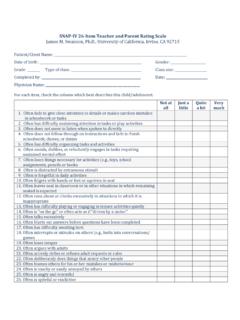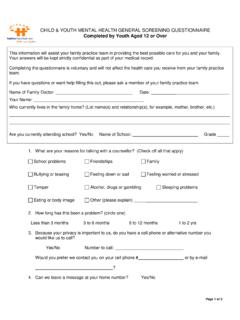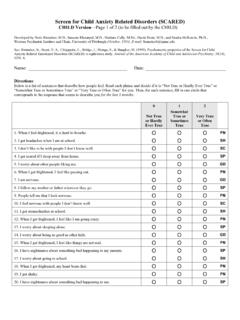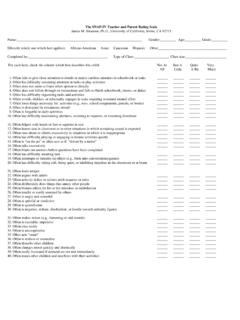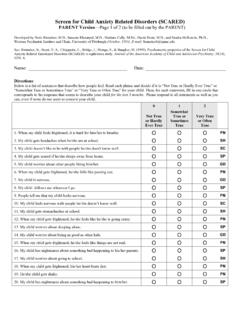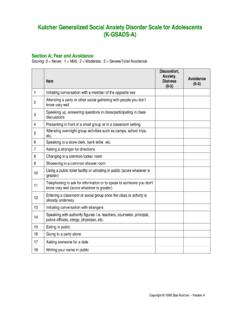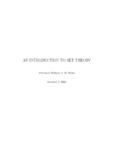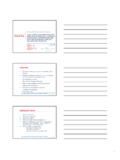Transcription of WEISS FUNCTIONAL IMPAIRMENT RATING SCALE …
1 WEISS FUNCTIONAL IMPAIRMENT RATING SCALE (WFIRS) instructions . Purpose ADHD symptoms and actual IMPAIRMENT overlap but are distinct concepts. It is important to measure . both since some patients are highly symptomatic but not impaired or vice versa This SCALE contains those items that are most likely to represent the patient's target of treatment.. Therefore, the use of the SCALE before and after treatment can allow the clinician to determine not only if the ADHD has improved, but if the patient's FUNCTIONAL difficulties are also better. This instrument has been translated into 18 languages. It has been used in many studies and is . psychometrically validated. This is the only measure of FUNCTIONAL IMPAIRMENT that looks at specific domains and has been validated in the ADHD population. Design and Validation Information Scoring The instrument uses a Likert SCALE such that any item RATING 2 or 3 is clinically impaired.
2 The SCALE can be scored by looking at the total score or by creating a mean score for the total score/number items for each domain, omitting those rated not applicable. For clinical purposes, when defining IMPAIRMENT for DSM-IV, clinicians can consider that any domain with at least two items scored 2, one item scored 3 or a mean score > is impaired. Validation The SCALE has been psychometrically validated with an internal consistency >.8 for each domain and for the SCALE as a whole. It has moderate convergent validity ( ) with other measures of functioning ( Columbia IMPAIRMENT SCALE and the Global Assessment of Functioning (GAF). It has moderate discriminating validity ( ) from symptoms pre-treatment ( ADHD- RATING SCALE ) and quality of life (CHIP). The domains have been confirmed by factor analysis, although the domain of school functioning separates into learning and behaviour.)
3 The SCALE is highly sensitive to change with treatment and, in particular, significantly correlated to change in ADHD symptoms (40% change) and overall psychopathology. Each anchor point on the Likert SCALE represents approximately one standard deviation(SD). A total score change of 13 would be considered a significant improvement or about half a SD. The change obtained in treatment is typically one full SD. The mean score for risky behaviour in children is but increases with age. For adolescents the mean score is 1. Copyright Information The WFIRS is copyrighted by the University of British Columbia (2000). It is in the public domain to encourage its use. It can be copied without permission, but the instrument must remain as published without modification to protect its integrity. The authors are solely responsible for its content. Margaret D WEISS MD PhD FRCP(C). Clinic Head, Provincial ADHD Program Clinical Professor, University of British Columbia Box 178, 4500 Oak St.
4 Department of Psychiatry Children's and Women's Health Centre, Room P-229. Telephone: 604 875 2738 Fax: 604 875 2099. Email: 111. Patient Name: Date of Birth: MRN/File No: Physician Name: Date: WEISS FUNCTIONAL IMPAIRMENT RATING SCALE PARENT REPORT (WFIRS-P). Your name: _____ Relationship to child: _____. Circle the number for the RATING that best describes how your child's emotional or behavioural problems have affected each item in the last month. Never or Sometimes Often or Very often or not at all or somewhat much very much n/a A FAMILY. 1 Having problems with brothers & sisters 0 1 2 3 n/a 2 Causing problems between parents 0 1 2 3 n/a 3 Takes time away from family members' work or activities 0 1 2 3 n/a 4 Causing fighting in the family 0 1 2 3 n/a 5 Isolating the family from friends and social activities 0 1 2 3 n/a 6 Makes it hard for the family to have fun together 0 1 2 3 n/a 7 Makes parenting difficult 0 1 2 3 n/a 8 Makes it hard to give fair attention to all family members 0 1 2 3 n/a 9 Provokes others to hit or scream at him/her 0 1 2 3 n/a 10 Costs the family more money 0 1 2 3 n/a B SCHOOL.
5 Learning 1 Makes it difficult to keep up with schoolwork 0 1 2 3 n/a 2 Needs extra help at school 0 1 2 3 n/a 3 Needs tutoring 0 1 2 3 n/a 4 Receives grades that are not as good as his/her ability 0 1 2 3 n/a Behaviour 1 Causes problems for the teacher in the classroom 0 1 2 3 n/a 2 Receives time-out or removal from the classroom 0 1 2 3 n/a 3 Having problems in the school yard 0 1 2 3 n/a 4 Receives detentions (during or after school) 0 1 2 3 n/a 5 Suspended or expelled from school 0 1 2 3 n/a 6 Misses classes or is late for school 0 1 2 3 n/a C LIFE SKILLS. 1 Excessive use of TV, computer, or video games 0 1 2 3 n/a 2 Keeping clean, brushing teeth, brushing hair, bathing, etc. 0 1 2 3 n/a 3 Problems getting ready for school 0 1 2 3 n/a WFIRS-P 1/2 115. Never or Sometimes Often or Very often or not at all or somewhat much very much n/a 4 Problems getting ready for bed 0 1 2 3 n/a 5 Problems with eating (picky eater, junk food) 0 1 2 3 n/a 6 Problems with sleeping 0 1 2 3 n/a 7 Gets hurt or injured 0 1 2 3 n/a 8 Avoids exercise 0 1 2 3 n/a 9 Needs more medical care 0 1 2 3 n/a 10 Has trouble taking medication, getting needles or visiting the doctor/dentist 0 1 2 3 n/a D CHILD'S SELF-CONCEPT.
6 1 My child feels bad about himself/herself 0 1 2 3 n/a 2 My child does not have enough fun 0 1 2 3 n/a 3 My child is not happy with his/her life 0 1 2 3 n/a E SOCIAL ACTIVITIES. 1 Being teased or bullied by other children 0 1 2 3 n/a 2 Teases or bullies other children 0 1 2 3 n/a 3 Problems getting along with other children 0 1 2 3 n/a 4 Problems participating in after-school activities (sports, music, clubs) 0 1 2 3 n/a 5 Problems making new friends 0 1 2 3 n/a 6 Problems keeping friends 0 1 2 3 n/a 7 Difficulty with parties (not invited, avoids them, misbehaves) 0 1 2 3 n/a F RISKY ACTIVITIES. 1 Easily led by other children (peer pressure) 0 1 2 3 n/a 2 Breaking or damaging things 0 1 2 3 n/a 3 Doing things that are illegal 0 1 2 3 n/a 4 Being involved with the police 0 1 2 3 n/a 5 Smoking cigarettes 0 1 2 3 n/a 6 Taking illegal drugs 0 1 2 3 n/a 7 Doing dangerous things 0 1 2 3 n/a 8 Causes injury to others 0 1 2 3 n/a 9 Says mean or inappropriate things 0 1 2 3 n/a 10 Sexually inappropriate behaviour 0 1 2 3 n/a DO NOT WRITE IN THIS AREA.
7 SCORING: A. Family B. School 1. Number of items scored 2 or 3. or Learning 2. Total score Behaviour or C. Life skills 3. Mean score D. Child's self-concept E. Social activities F. Risky activities Total University of British Columbia 2011. Any part of this document may be freely reproduced without obtaining the permission of the copyright owner, provided that no changes whatsoever are made to the text and provided that this copyright notice is included in its entirety in any and all copies of this document 116 Version: October 2011. Refer to for latest updates. WFIRS-P 2/2.
